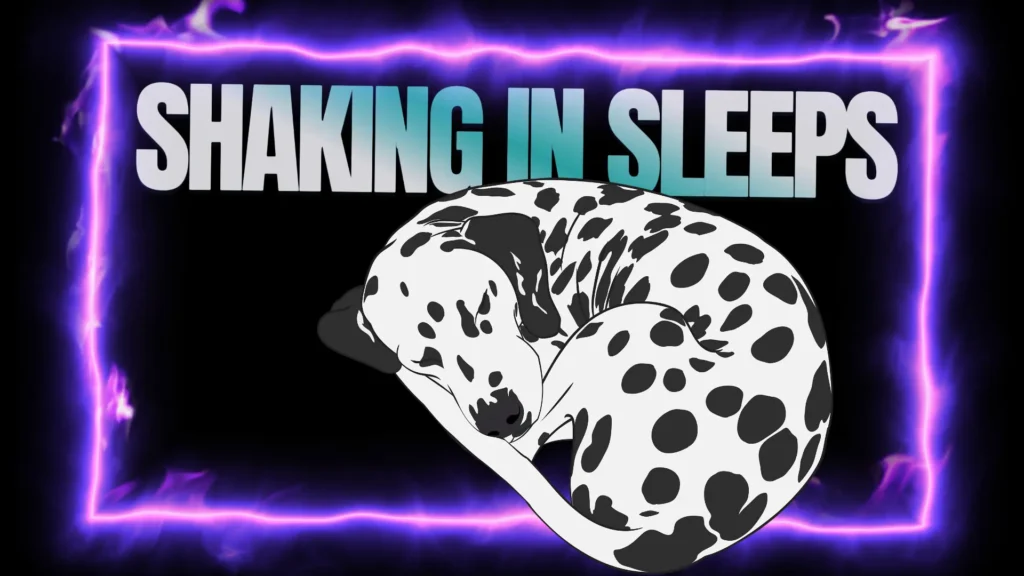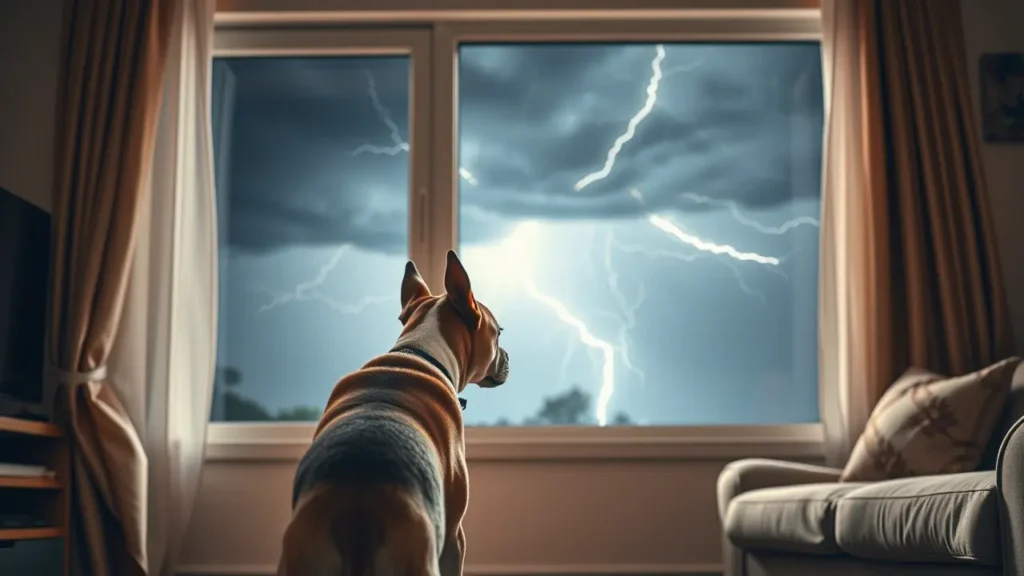Seeing your dog shake during sleep can be concerning. Slight twitching and shaking in normal for dogs during sleep. Dogs dream and experience muscle activity like humans. However, persistent shaking could indicate underlying health conditions. Understanding the causes and knowing when to take action can help ensure your dog stays happy and healthy.
Do Dogs Shake During REM Sleep
Dogs experience distinct sleep stages, including Rapid Eye Movement (REM) sleep. This stage is characterized by heightened brain activity. During REM, a dog’s brain remains awake. Scientific studies have shown that mammals, including dogs, exhibit similar neural patterns during REM sleep as humans do.
During REM sleep, the brain’s electrical activity becomes dynamic. This response becomes visible through muscle twitches, limb movements, barking and whimpering. This happens to “act out” dream scenarios. You shouldn’t be worried because these movements are harmless. A temporary paralysis of voluntary muscles (called muscle atonia) prevents full physical enactment of dreams in both humans and animals.
Dogs’ Shaking due to Thermoregulation
Thermoregulation is the ability to maintain a stable internal body temperature. It is a critical physiological process for all mammals. However, smaller breeds, short-haired dogs, puppies, and senior dogs are vulnerable to cold temperatures. Smaller breeds have a higher surface area-to-volume ratio, which causes them to lose heat more rapidly compared to larger breeds.
Similarly, short-haired dogs lack the insulating properties provided by thicker coats, making them less equipped to retain body heat in cooler environments. Puppies are unable to fully regulate their body temperature. Their thermoregulatory systems are not yet fully developed. Senior dogs experience a decline in metabolic efficiency and muscle mass. Both contribute to reduced heat production.
When exposed to cold conditions, these dogs shiver during sleep as a mechanism to generate body heat through rapid muscle contractions. Shivering increases metabolic activity and produces warmth by converting stored energy into heat. To support effective thermoregulation, pet owners should ensure that their dogs have access to a warm and cozy sleeping environment.
Do Neurological disorders Shake Dogs in Sleep
One examples of neurological disorders is seizures. It is involuntary movements during sleep. Seizures occur due to abnormal electrical activity in the brain. Shaking in REM sleep is brief, but shaking in seizures are pronounced and prolonged.
Seizures also present with additional symptoms such as loss of consciousness, drooling, paddling motions of the limbs. Dogs may experience seizures due to brain tumors, trauma, infections and metabolic imbalances.
If the shaking appears unusual—such as being more intense, lasting longer than a few minutes, or accompanied by other signs of distress—a prompt veterinary evaluation is essential. Diagnostic tools such as electroencephalograms (EEGs), magnetic resonance imaging (MRI), or blood tests may be used to identify the root cause of the seizures and guide appropriate treatment plans.
How Fevers Contribute to Shaking in Dogs

Certain illnesses can cause shivering or trembling in dogs. These symptoms are indicative of an underlying health issue such as fever, infection, and systemic disease. Shivering is often the body’s response to elevated core temperature during a fever.
Fever is a common physiological response in dogs when their body is fighting off an infection. A fever occurs when the hypothalamus raises the body’s “set point” in response to immune system signals. The increase in temperature is intended to create an inhospitable environment for pathogens.
One of the hallmark symptoms of fever in dogs is shivering. During sleep, it serves as a mechanism to generate additional body heat. When the hypothalamus raises the body’s temperature set point, the dog’s current body temperature temporarily falls below this new threshold. This triggers involuntary muscle contractions and shivering. These rapid muscle movements produce heat through increased metabolic activity, and helps the body reach the elevated temperature required to fight the illness. This process is beneficial in the short term. Prolonged fevers can lead to dehydration, weakness, and other complications.
To differentiate between normal sleep-related twitching and fever-induced shivering, pet owners should assess whether the shaking occurs consistently. Taking your dog’s temperature using a rectal thermometer provides valuable information. If you suspect a fever or observe concerning signs, consulting a veterinarian is essential.
Symptoms to Look for When Your Dogs Sleeps and Shakes
Occasional shaking or twitching during sleep is normal. But you should always look for symptoms to determine whether it’s normal or a sign of an underlying health issue. Below is a list of concerning symptoms to watch for. Call your vet, if you see any of the symptoms in your dog during sleep.
| Prolonged shaking in sleeps Hot ears, nose, paws Lethargy, weakness, loss of appetite Heavy panting Pain Whimpering, whining, yelping in sleep Shifting positions frequently Seizures Rigid, full-body shaking Stiff legs Loss of bladder/bowel control Takes longer than usual to wake up Frequent sleep disturbances and nightmares Tucked tail, ears pinned back after waking |
Excessive shaking could be a sign of something serious. Monitor your dog for additional symptoms. If your dog frequently shakes in their sleep and shows signs of distress, consulting a vet is the best way to ensure their well-being. By staying attentive and proactive, you can provide your furry friend with the care and comfort they need for a restful and healthy life.




